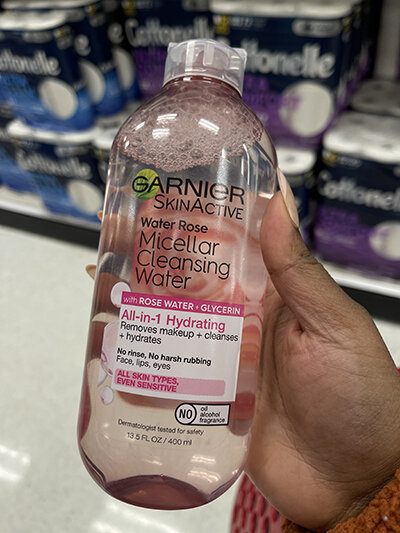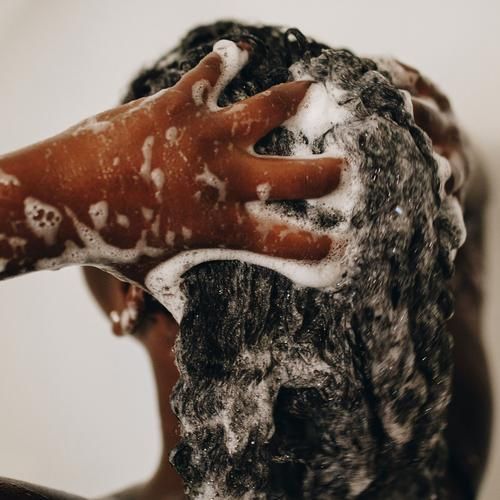Best Face Oils to use for Dermaplaning Skin at Home


I recently discovered the amazing effects of dermaplaning after a session with my aesthetician. Needless to say, I went ahead and bought my own for home use to establish a routine and it has made a noticeable difference in my skin. Especially when paired with particular oils. Let’s dive into the best facial oils for dermaplaning at home.
Dermaplaning has become one of the most sought-after skincare treatments for achieving smooth, radiant skin. This exfoliating procedure involves using a sharp scalpel to gently scrape away dead skin cells and fine facial hair, leaving your complexion looking refreshed and rejuvenated. To maximize the benefits of dermaplaning and maintain healthy, glowing skin, it’s essential to follow up with the right skincare products. One of the key post-dermaplaning essentials is facial oil. In this guide, we’ll explore the best facial oils for dermaplaning to help you achieve the best results and keep your skin looking its best.
What is Dermaplaning?


Dermaplaning is a non-invasive exfoliation technique that involves using a sharp, sterile scalpel to gently scrape away the top layer of dead skin cells and fine vellus hairs (commonly known as peach fuzz) from the surface of the skin. This process helps to reveal a smoother, brighter complexion by eliminating dull and damaged skin, and it can enhance the effectiveness of skincare products by allowing them to penetrate deeper into the skin. Dermaplaning is known for its ability to improve the overall texture and appearance of the skin, leaving it looking fresh and rejuvenated. It’s a popular option for those seeking a quick and painless method of exfoliation and hair removal, often performed in a professional setting but can also be done at home with the right tools and precautions.
Why Use Facial Oil After Dermaplaning?
Before diving into our list of top facial oils for dermaplaning, it’s important to understand why facial oil is an essential part of your post-dermaplaning skincare routine:
- Hydration: Dermaplaning exfoliates the skin, which can leave it feeling slightly sensitive and dry. Facial oils provide an intense surge of hydration, ensuring your skin stays moisturized and comfortable.
- Barrier Repair: The micro-exfoliation process can compromise the skin’s natural barrier. Facial oils help restore this barrier, keeping irritants out and locking in moisture.
- Soothing Properties: Some facial oils contain ingredients like antioxidants, anti-inflammatories, and vitamins that soothe and calm the skin, reducing redness and irritation.
- Enhanced Absorption: Facial oils can enhance the absorption of other skincare products you apply after dermaplaning, such as serums and moisturizers.
Now, here’s the top facial oils that work wonders post-dermaplaning and some of personal favorites:
1. Jojoba Oil
- Best for: All skin types, including sensitive skin
- Key Benefits: Balances sebum production, hydrates, and maintains a healthy skin barrier.
- Why It’s Great: Jojoba oil closely resembles the skin’s natural sebum, making it a fantastic choice for all skin types.
2. Rosehip Seed Oil
- Best for: Dry skin, mature skin, and uneven skin tone
- Key Benefits: Rich in vitamin A, C, and essential fatty acids; promotes skin regeneration and reduces the appearance of dark spots and fine lines.
- Why It’s Great: Rosehip oil and rosehip seed oil offer excellent results in improving overall skin health, especially for those with mature or sun-damaged skin.
3. Argan Oil
- Best for: Dry skin, dehydrated skin, and those seeking anti-aging benefits
- Key Benefits: Rich in antioxidants, vitamin E, and essential fatty acids; improves skin elasticity and hydration.
- Why It’s Great: Argan oil, often called “liquid gold,” is a lightweight oil that absorbs quickly, making it perfect for dry or mature skin.
4. Squalane Oil
- Best for: All skin types, including oily and acne-prone skin
- Key Benefits: Non-comedogenic, balances oil production, and keeps skin moisturized.
- Why It’s Great: Squalane oil mimics the skin’s natural oils, making it an excellent option for those prone to breakouts.
5. Grapeseed Oil
- Best for: Oily and acne-prone skin
- Key Benefits: Lightweight, tightens the skin, and minimizes the appearance of large pores.
- Why It’s Great: Grapeseed oil is considered on of the best face oils rich in antioxidants and absorbs quickly without clogging pores.
6. Hemp Seed Oil
- Best for: Sensitive skin and those with skin conditions like eczema
- Key Benefits: Contains omega-3 and omega-6 fatty acids, soothes inflammation and supports the skin barrier.
- Why It’s Great: Hemp seed oil is gentle and effective, making it a better option for sensitive or irritated skin.
7. Chia Seed Oil
- Best for: All skin types
- Key Benefits: Deep hydration, enhances skin elasticity, and provides essential nutrients.
- Why It’s Great: Chia seed oil is nutrient-rich, offering hydration and anti-aging benefits without clogging pores.
Selecting the Right Oil for Your Skin Type
To ensure you choose the best facial oil for dermaplaning, consider your skin type and specific concerns. Different oils offer unique benefits, so here are some additional recommendations:
- Dry Skin: Opt for richer oils like argan, marula, or rosehip seed oil to deeply hydrate and nourish your skin.
- Oily or Acne-Prone Skin: Lightweight, non-comedogenic oils such as squalane or grapeseed oil can help maintain balance without clogging pores.
- Sensitive Skin: Look for oils with soothing properties, like jojoba or hemp seed oil, to minimize redness and irritation.
- Mature Skin: Oils rich in antioxidants, such as argan or rosehip seed oil, can help combat signs of aging and promote skin regeneration.
Again, dermaplaning is an effective method for achieving smoother, more radiant skin. However, it’s equally essential to follow up with the right skincare products to maintain these results. Facial oils are a crucial part of post-dermaplaning care as they offer hydration, soothing properties, and barrier restoration.
The best facial oil for dermaplaning varies depending on your skin type and concerns. To discover the ideal option for you, experiment with different oils, and remember to perform a patch test before applying a new product to your face. With the perfect facial oil in your skincare arsenal, you’ll be well on your way to achieving and sustaining that radiant, post-dermaplaning glow.
Incorporating facial oils into your dermaplaning skincare routine can enhance the benefits of the procedure and leave your skin feeling even more nourished and radiant. Here’s a step-by-step guide on how to effectively include facial oils in your post-dermaplaning skincare routine:
Step 1: Cleanse Thoroughly
Before you begin dermaplaning, ensure your skin is clean and free from makeup, dirt, and impurities. Use a gentle, sulfate-free cleanser to wash your face, and then pat it dry with a clean, soft towel.
Step 2: Perform Dermaplaning
If you’re not experienced with dermaplaning, consider seeking the services of a licensed esthetician or dermatologist. They will use a sterile scalpel to exfoliate your skin gently. Make sure the procedure is performed in a clean, sanitary environment to minimize the risk of infection.
Step 3: Rinse and Soothe
After dermaplaning, your skin may feel slightly sensitive, so it’s essential to rinse off any remaining exfoliated skin cells and soothing agents used during the procedure. Use lukewarm water to gently rinse your face, and then pat it dry with a clean towel.
Step 4: Apply a Toner (Optional)
Using a gentle, alcohol-free toner can help balance your skin’s pH levels. This step is optional, but it can prepare your skin to better absorb the facial oil that follows.
Step 5: Choose the Right Facial Oil
Select a facial oil that suits your skin type and concerns, as discussed in the previous sections. Dispense a few drops of the oil onto your fingertips.
Step 6: Warm the Oil
To enhance absorption and improve the overall experience, warm the facial oil by rubbing it between your palms. This also helps distribute the oil more evenly across your face.
Step 7: Apply the Facial Oil
You want to use 2-3 drops then gently press the warmed oil onto your skin, starting with your forehead and moving down to your cheeks, nose, and chin. Use upward and outward motions, avoiding the delicate eye area. Pay extra attention to areas where you might experience dryness or irritation.
Step 8: Massage and Pat
Using your fingertips, gently massage the oil into your skin in upward and circular motions. This not only helps with absorption but also promotes blood circulation. Be sure to massage your neck and décolletage if desired.
Step 9: Allow Absorption
Give the facial oil a few minutes to fully absorb into your skin. This allows it to work its magic and lock in moisture.
Step 10: Follow with Additional Skincare
Depending on your skincare routine, you can follow up with a serum or moisturizer. The facial oil acts as an excellent base for other products, helping them penetrate deeper into your skin.
Step 11: Sunscreen (Daytime Routine)
If you’re doing your dermaplaning routine in the morning, be sure to apply a broad-spectrum sunscreen with SPF 30 or higher to protect your freshly exfoliated skin from UV damage.
Step 12: Repeat as Needed
Incorporate facial oil into your post-dermaplaning skincare routine as often as needed. Some people prefer to use it daily, while others use it a few times a week. Listen to your skin and adjust your routine accordingly.
You’ve Unlocked the Key to Smoother and Brighter Skin
There you have it—the ultimate guide to achieving radiant skin through the powerful combination of dermaplaning and the right facial oils. With the knowledge of how these two skincare heroes complement each other, you’re well on your way to unlocking your skin’s full potential and enjoying a smoother, more luminous complexion. Smooth skin and brighter skin don’t have to be hard to achieve. Adding these vital nutrients to the surface of the skin goes a long way.
I’d love it if you pass along today’s article to a friend, and don’t forget to subscribe to our Newsletter for more applicable tips into your everyday life.







